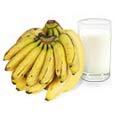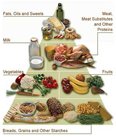|
Nuts Beans Pulsesby Mirella Levin
What Are They?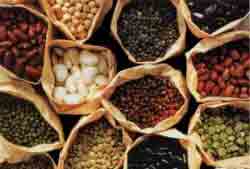
Nuts beans pulses are foods that are generally found in one’s diet. “Pulses” is a category that includes beans, lentils and peas. All of these are an excellent source of protein and of fiber. They can also be counted as one of your daily fruit and vegetables and are also low in fat. They are also a good source of vitamins and minerals, especially for vegetarians as these foods are not derived from animals. However, the downside to nuts beans pulses is that they are incomplete proteins. This means that in order for them to help build muscle, they must be added to other foods to make them complete proteins. An incomplete protein lacks the proportions of some amino acids that are required for the muscle to make use of all the non-essential amino acids that are found in muscle-building foods. This will not have the desired effect of helping the muscle grow. However, when added to other foods that contain protein, nuts beans pulses can become complete proteins and therefore help to build up muscle. Some common combinations are: Rice with beans, beans on toast and nuts with vegetables. (source:http://www.loseweightbuildmuscles.com/foods-that-build-muscle-pulses.html) Nuts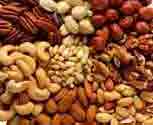
Nuts are a form of seed. However, unlike most fruits, the seed and the fruit are not separable and both are consumed. There are many different types of nuts such as walnuts, pecans, cashews, almonds and hazelnuts. These are commonly used as snack foods or as ingredients in food dishes or baked goods (such as brownies or cookies). Nuts can be beneficial to health as studies have shown that by eating nuts on a regular basis, the likelihood of contracting Coronary Heart Disease is lessened and LDL (bad) cholesterol levels can decrease. Nuts are a good source of many important fatty acids that contribute to growth, healthy skin, nails and hair, physical and mental development and blood pressure regulation. They also contain many essential vitamins such as vitamins E, F and G and are a “source of protein, folate, fiber and essential minerals such as magnesium, phosphorus, potassium, copper and selenium”. Beans
Beans are commonly found in many prepared dishes (especially Mexican ones). As with nuts, there are many different types of beans such as the broad bean, rice bean, chick pea and the lima bean. Figure one shows the average nutritional values of beans. It shows that beans are a good source of protein and carbohydrates and are low in fat. However, some beans are toxic unless they are cooked first. This process will eliminate the toxin Phytohaemagglutinin that can be found in beans such as red beans and kidney beans. Another downside is the commonly known fact that consuming beans (especially in large quantities) can often lead to flatulence. Eaten in moderation, beans can be a good source of many needed elements such as protein and are low calorie (usually contain 100 to 120 kilocalories per half cup). Beans can also count as one of your five-a-day fruit and vegetable servings. Some beans also contain large amounts of iron, magnesium, phosphorus, potassium etc, all of which we need for a healthy body. Pulses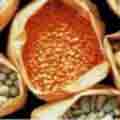
The food category of pulses is comprised of approximately a dozen grains and seeds, each differing in size and shape. These include dry beans, dry peas, chick peas, lentils and lima beans. Pulses are known as an excellent source of protein for vegetarians (they are 20 to 25% protein in weight). However, they lack certain amino acids that are usually consumed with other foods to obtain a full protein diet. Pulses are known to help elderly people live better lives and it has been shown that by eating pulses, the likelihood of suffering from Coronary Heart Disease is lower. “Pulses are low fat, high fiber, no cholesterol, low glycemic index, high protein, and high nutrient foods. They are excellent foods for people managing their diabetes, heart disease or coeliac disease. Pulses are also good for people who want to eat healthy food to help reduce their risk of heart disease or diabetes. Additionally, pulses can help people concerned with weight control.” The main downside to pulses and nuts is that they often contain large quantities of fats and carbs. However, the bottom line is that nuts beans pulses can greatly increase the nutritional value of your diet.
Editor's Note:Eat Well Without Breaking the BudgetTimes are becoming difficult and unfortunately they will probably get more difficult in the next few years, given the state of the economies around the world. To see us through the next few years, we must find new strategies for keeping healthy despite the recession. If we choose foods that have high nutrition but cost less, healthy eating is accessible to everyone without breaking the bank. With obesity and diabetes growing at epidemic rates and food costs, especially for meat, skyrocketing in the United States and elsewhere, the humble bean is growing in popularity. Sources for Nuts beans pulsesnuts beans pulses
Eggs and Pulses - see:- http://en.wikipedia.org/wiki/Pulse_(legume)
|
Subscribe to Age-well.org Ezine
Eat Well
Table of Contents
Eat-Well-Homepage
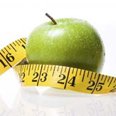
- Water
- Antioxidants
- Chocolate
- Caffeine
- Cherries
- Cranberries
- Maquiberries
- Salt
- Sugar
- Cholesterol and its Effect on Health
- Fruit & Vegetables - Fresh Versus Frozen or Canned
- Nuts, Beans and Pulses
- Monosodium Glutamate (MSG)
- Unsaturated Fats - The Right Fats for Health
- What are Transfats?
- Water
- 20 Benefits of Drinking Enough Water



All About Vitamins and Minerals

